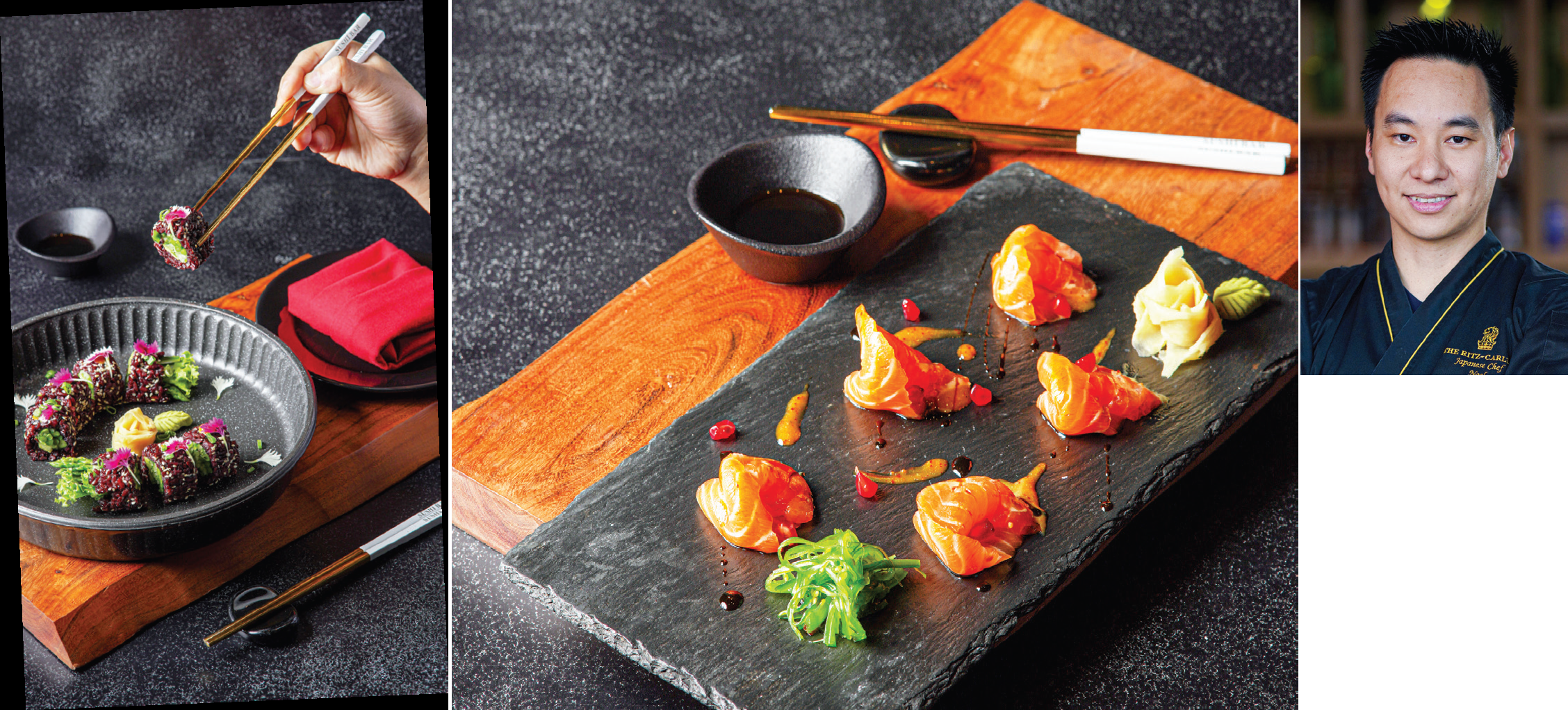
Ritz-Carlton chef redefifines Japanese cuisine with tradition
In an exclusive interview with News Trail, Chef Noel Adrias shares his culinary journey, offering insights into his signature dishes, creative fusion techniques & commitment to sourcing the finest ingredients
Chef Noel Adrias, Executive Chef at Izu, The Ritz- Carlton, Bangalore, brings two decades of expertise in Japanese cuisine. Originally from Pampanga, Philippines, Chef Noel shared his culinary journey in an excellent interview with News Trail that took him from Dubai to India, where he blends authentic Japanese flavours with local Karnataka ingredients. Known for signature dishes like smoked bluefin tuna chu-toro and dark forest rolls, Chef Noel is committed to sourcing the finest ingredients, creating a unique fusion of tradition and innovation at Izu.
What inspired you to get into the culinary world? My journey began in 2004 in Dubai, UAE, where I worked as a trainee. I had a mentor, Chef Augusto Cabrera, who truly inspired me. I watched him entertain guests while creating art on the plate. Seeing the guests enjoy the food, I thought to myself, "I want to do this too." I wanted to serve food in such a way that guests would have the same experience.
How did you adapt your cooking style to suit the people of Bengaluru? I moved to Bengaluru in 2018 and it has been easier for me to adapt because of the great weather and the supportive people. Everything is very accessible here and I can focus on my craft, particularly plating. I had to adjust to their palates, which tend to favour rich, flavorful dishes. In Japanese cuisine, I would typically serve raw fish with light soy, but here, I need to enhance the flavours to match the local preference for boldness.
Do you blend the Japanese cooking style with other cooking methods? At Izu, we focus on both authentic Japanese and modern interpretations. For example, I use a unique black rice from Manipur, which is highly nutritious and combine it with Alfonso mangoes, a local ingredient. While some ingredients are imported, we also use a lot of local produce. Most of my seafood comes from Japan, like scallops, unagi, salmon and tuna. I also import ingredients from places like Peru, including Peruvian avocados and asparagus, which are essential for the unique fusion we create at Izu.
How do you incorporate seasonal ingredients into your dishes? I make special promotions for seasonal ingredients. For example, during the mango season, I create a Nikkei platter with Alfonso mangoes, sushi rolls and vegetables. We also use seasonal seafood like tiger prawns, which I grill and pair with forbidden black rice. We use three main methods: tempura, robata grilling and Nikkei, which combine Japanese and Peruvian styles. Nikkei often involves sashimi with citrus and fruits, a fusion style that reflects the cuisine’s versatility.
What’s your signature dish at Izu? My signature dish is the smoked Chutoro (belly of the bluefin tuna). We slice it thinly, smoke it with dried edible flowers and serve it with gold flakes. It is quite luxurious. We have a special vegetarian dish called "dark forest rolls," which combines forbidden black rice from Manipur, asparagus and avocado with a touch of white truffle oil.
How do you handle crucial aspects such as hygiene and presentation? Hygiene is critical, especially in Japanese cuisine, where cleanliness is paramount. We clean before, during and after operations. For example, even when preparing sushi, we make sure everything is spotless. Presentation is also important and I focus on plating the dishes in an artistic way, making sure they look as good as they taste.
How has social media influenced your culinary journey? While I believe in being flexible, I think some combinations can be a bit much. For instance, some of the overly sweet and savoury combinations that appear on social media do not always appeal to me. That said, I do enjoy creating unique pairings, like chocolate with wasabi flavour for desserts, which is a Japanese fusion with a modern twist.
 English daily published in Bengaluru & Doha
English daily published in Bengaluru & Doha





